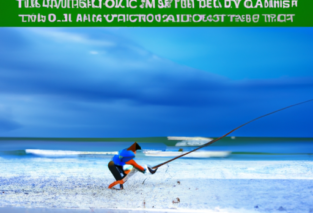If you’ve ever wondered how to go ice fishing or wanted to enhance your skills as an ice angler, “Can You Go Ice Fishing: Tips and Techniques for Ice Anglers” is the perfect companion for your frozen adventures. This comprehensive guide offers invaluable advice, from choosing the right gear to setting up an ice fishing shelter, and from understanding the behavior of fish beneath the ice to mastering various ice fishing techniques. Whether you’re a beginner or a seasoned angler, this book will equip you with the knowledge and techniques to make your ice fishing experience a successful and memorable one. Adventure awaits you on the frozen lakes, so grab your fishing gear and prepare to embark on an exciting ice fishing journey!
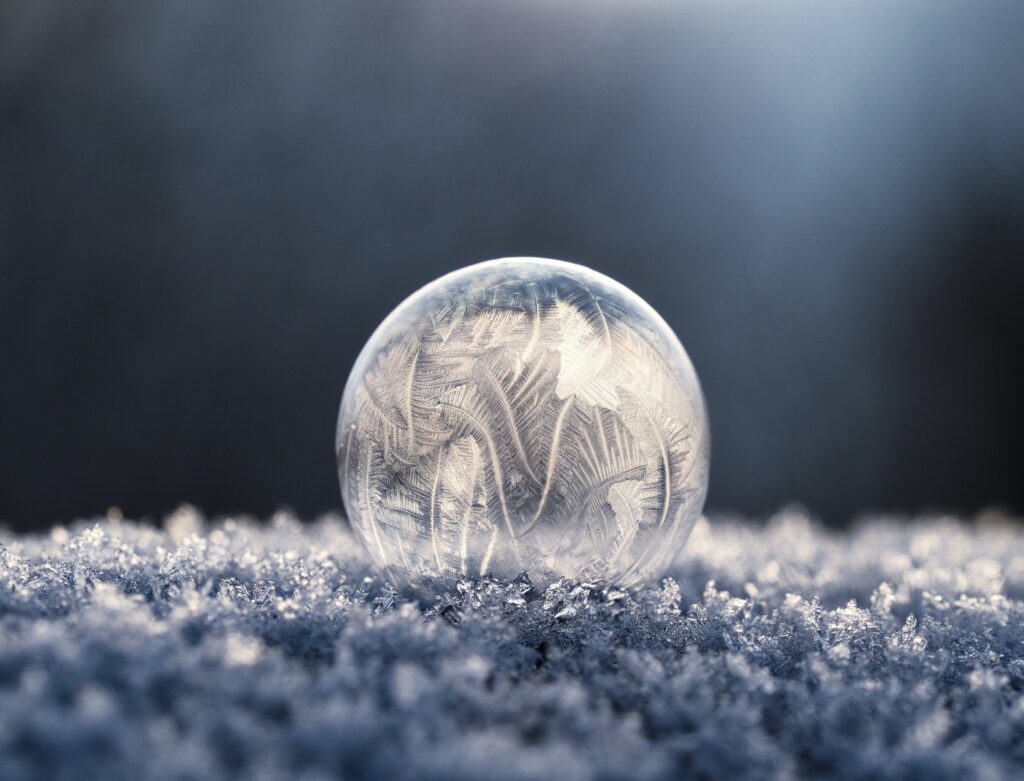
Essential Gear and Equipment
Ice Auger for Drilling Holes
When it comes to ice fishing, the first essential piece of gear you will need is an ice auger. This tool is used to drill holes in the ice, allowing you to drop your line and start fishing. There are different types of ice augers available, including manual hand augers, electric augers, and gas-powered augers. Consider factors such as ease of use, efficiency, and portability when choosing the right ice auger for your needs.
Ice Fishing Rods and Reels
Once you have your fishing hole ready, you’ll need a reliable ice fishing rod and reel. Ice fishing rods are typically shorter and more compact than regular fishing rods, allowing for easier maneuverability in cramped ice fishing shacks or on frozen lakes. Look for a rod with a sensitive tip and a sturdy backbone to handle the challenges of ice fishing.
Ice Fishing Tip-Ups
Tip-ups are another essential piece of gear for ice fishing. These devices are designed to alert you when a fish bites your bait. They consist of a flag that pops up or a spool that rotates when a fish takes the bait. Tip-ups help you cover multiple holes simultaneously, increasing your chances of catching fish. Make sure to choose tip-ups that are durable and easy to set up and adjust.
Ice Scoop and Skimmer
An ice scoop and skimmer are necessary tools for ice fishing, as they help you remove slush, ice chips, and debris from your fishing hole. This keeps the hole clean and prevents the build-up of ice, allowing you to have a clear view of your bait and fish. Look for a scoop and skimmer with a long handle for easy reach and a sturdy construction to withstand cold temperatures.
Ice Fishing Shelter
In cold winter weather, having an ice fishing shelter is essential for staying comfortable and protected from the elements. There are different types of shelters available, including portable ice fishing tents, pop-up shelters, and permanent ice fishing houses. Consider factors such as size, portability, insulation, and ease of set up when choosing the right ice fishing shelter for your needs.
Ice Cleats or Traction Devices
When venturing out onto the ice, it’s crucial to ensure your safety by wearing ice cleats or traction devices. These attachments to your boots provide additional grip, minimizing the risk of slips and falls on the slippery ice surface. Look for cleats that are easy to attach and adjust and provide sufficient traction on various types of ice.
Ice Fishing Sled
An ice fishing sled is a convenient way to transport your gear across the frozen lake or ice. These sleds are designed to glide smoothly on ice with minimal resistance, making it easier to haul your equipment to your fishing spot. Consider the size and weight capacity of the sled, as well as features such as handles and runners for improved maneuverability.
Ice Fishing Tackle Box
To keep your fishing gear organized and easily accessible, invest in a good ice fishing tackle box. Look for a tackle box that is durable, waterproof, and has several compartments and trays for storage. This will allow you to keep your lures, hooks, weights, and other small items organized and protected from the cold and moisture.
Ice Fishing Electronics
If you want to take your ice fishing experience to the next level, consider investing in ice fishing electronics. These devices, such as fish finders and underwater cameras, help you locate fish and understand the underwater environment. Fish finders use sonar technology to detect fish and show their location on a screen, while underwater cameras provide real-time video footage of what’s happening beneath the ice.
Ice Fishing Safety Gear
Last but certainly not least, prioritize your safety while ice fishing by equipping yourself with the necessary safety gear. This includes items such as a life jacket or personal flotation device, ice picks or spikes to aid in self-rescue in case of falling through the ice, and a first aid kit for any minor injuries. Always check the ice thickness and follow ice safety guidelines to ensure a safe and enjoyable ice fishing experience.
Choosing the Right Location
Researching Local Ice Conditions
Before you head out for a day of ice fishing, it’s crucial to research and understand the local ice conditions. Different bodies of water freeze at different rates, and the ice thickness can vary even within the same lake or river. Stay informed about the current ice conditions by checking local fishing reports, talking to experienced anglers, and consulting ice safety guidelines provided by local authorities.
Identifying Fish Species and Habitats
To increase your chances of success while ice fishing, it’s essential to identify the fish species that inhabit the body of water you plan to fish in. Different fish species have different behaviors and preferences when it comes to location and bait. Research and learn about the fish species you’re targeting to understand their habits, preferred habitats, and feeding patterns during winter.
Selecting a Suitable Fishing Spot
Once you have a good understanding of the local ice conditions and the fish species you’re targeting, it’s time to select a suitable fishing spot. Look for areas where the fish are likely to be found, such as drop-offs, weed beds, submerged structures, or areas with depth changes. Pay attention to the presence of other anglers, as they can indicate productive fishing spots.
Considering Depth and Structure
When selecting a fishing spot, consider the depth and structure of the underwater environment. Some fish species prefer shallow water, while others are found in deeper areas during winter. Pay attention to underwater contours and structures such as rock piles, logs, or vegetation that can attract fish. Understanding the depth and structure of the fishing spot will help you choose the right fishing techniques and bait.
Analyzing Underwater Topography
To gain a better understanding of the underwater topography, consider using a fish finder or studying topographic maps of the lake or river you plan to fish in. These tools can provide valuable information about the depth changes, weed beds, and other underwater features that can attract fish. Analyzing the underwater topography will help you locate potential fishing hotspots and increase your chances of success.
Monitoring Weather and Ice Thickness
Lastly, keep a close eye on the weather conditions leading up to your ice fishing trip and while you’re on the ice. Changes in weather can affect fish behavior and their willingness to bite. Additionally, monitor the ice thickness regularly to ensure your safety. Sudden changes in temperature can impact the stability of the ice, and it’s crucial to stay updated on local ice safety guidelines and recommendations.
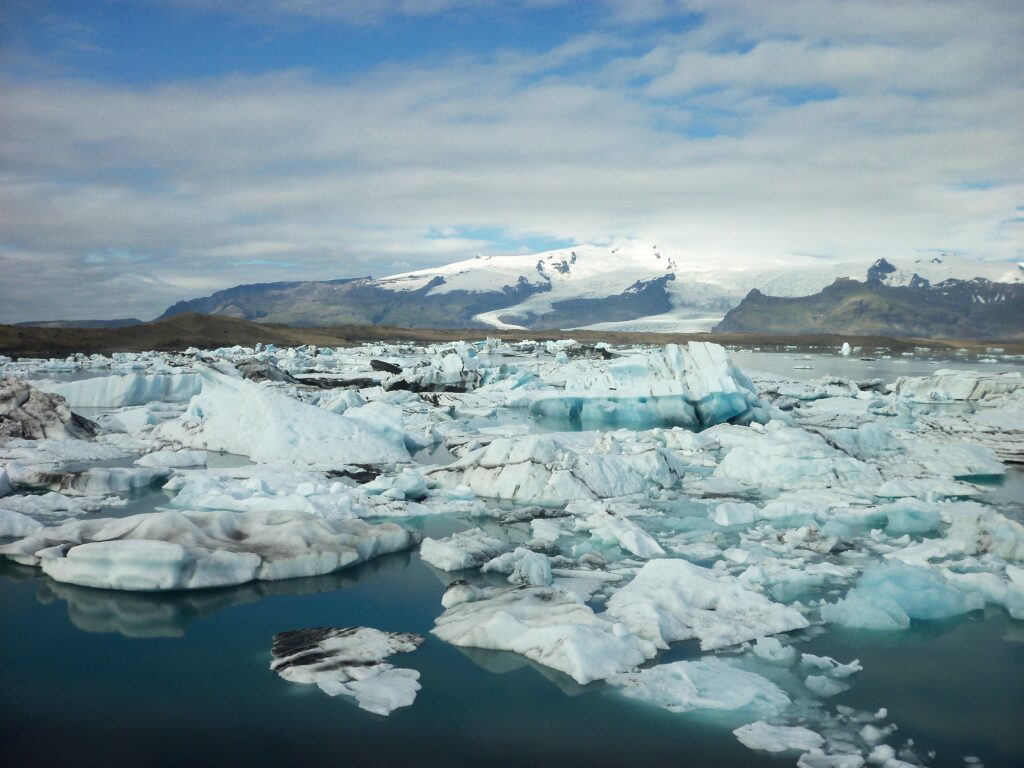
Preparing for Ice Fishing
Checking Ice Thickness and Safety
Before you head out onto the ice, it’s essential to check the ice thickness and ensure it’s safe for ice fishing. Different activities require different minimum ice thicknesses, so consult local ice safety guidelines for accurate information. Carry an ice spud or an ice auger to check the ice thickness periodically as you move along. Remember, safety should always be your top priority.
Dressing Appropriately for Cold Weather
Dressing appropriately for cold weather is crucial for your comfort and safety during ice fishing. Layering is key to staying warm, as it allows you to adjust your clothing based on your activity level and the weather conditions. Start with a moisture-wicking base layer, followed by an insulating layer, and finish with a windproof and waterproof outer layer. Don’t forget to wear insulated and waterproof boots, warm gloves or mittens, a hat, and a neck gaiter or scarf to protect exposed skin.
Gathering and Organizing Fishing Gear
To ensure a smooth and enjoyable ice fishing experience, gather and organize all your fishing gear before heading out. Check that you have all the necessary rods, reels, tackle, bait, and other equipment. Inspect your gear for any damage or wear and make any necessary repairs or replacements. Organize your gear in your tackle box or bag, keeping items readily accessible and securely stored.
Packing Sufficient Food and Drinks
Ice fishing can be a full-day activity, so it’s essential to pack and bring sufficient food and drinks to keep you energized and hydrated. Pack easy-to-eat and non-perishable snacks such as energy bars, jerky, nuts, and dried fruits. Bring plenty of water or other warm beverages, as staying hydrated is crucial in cold temperatures. Don’t forget to pack a thermos with hot drinks to warm up during breaks.
Informing a Friend or Family Member
Before heading out for your ice fishing adventure, always inform a friend or family member about your plans. Provide them with details on your intended location, estimated return time, and any emergency contact numbers. This ensures that someone knows of your whereabouts and can take appropriate action if necessary. It’s better to be safe than sorry.
Bringing Ice Fishing License and Regulations
To comply with local regulations and avoid any legal issues, it’s important to obtain the necessary ice fishing license before you start fishing. Familiarize yourself with the fishing regulations specific to your location, including bag limits, size restrictions, and catch-and-release guidelines. Remember to carry your fishing license and any required permits with you during your ice fishing trip and follow all the regulations to preserve the fishery.
Ice Fishing Techniques
Jigging
One popular ice fishing technique is jigging. Jigging involves repeatedly lifting and lowering your baited hook or lure in the water to imitate the movement of a swimming fish. This motion attracts the attention of nearby fish and entices them to bite. Experiment with different jigging actions, such as short and rapid movements or slower and more subtle motions, to see what triggers the fish to strike.
Dead Stick Method
The dead stick method is a passive ice fishing technique that involves placing a stationary rod, also known as a dead stick, in a holder or a tip-up and waiting for the fish to bite. This technique is effective for targeting fish that prefer a slow-moving or stationary bait, such as walleye or lake trout. Use live bait or attach a small jig or lure to your dead stick and wait patiently for the fish to take the bait.
Tip-Up Fishing
Tip-up fishing is another popular technique that allows you to fish multiple holes simultaneously. Tip-ups consist of a mechanism that signals when a fish takes the bait, such as a flag that pops up or a spool that rotates. Set up your tip-ups strategically across your fishing area and use live bait or artificial lures to attract fish. Monitor your tip-ups closely and be ready to strike when a flag pops up or the line starts spinning.
Using Live or Artificial Bait
Whether you choose to use live or artificial bait depends on various factors, including the fish species you’re targeting and personal preference. Live bait, such as minnows, worms, or waxworms, can be highly effective at attracting fish and triggering strikes. Artificial bait, such as jigs, spoons, or soft plastics, can mimic the appearance and movement of natural prey and entice fish to bite. Experiment with different types of bait to see what works best for your target species.
Understanding Fish Behavior in Winter
Fish behavior in winter can differ significantly from other seasons, and understanding these behavioral patterns can greatly improve your chances of success. In colder water temperatures, fish tend to move slower and conserve energy. They often seek out areas with cover or structure to hide and ambush their prey. Pay attention to water depth, structure, and temperature to locate feeding areas and adjust your fishing techniques accordingly.
Reading Ice Fishing Sonar
Ice fishing electronics, such as fish finders with sonar capabilities, can be a valuable tool for locating fish and understanding the underwater environment. Sonar technology allows you to see the structure of the lake or river bottom and detect fish presence and their depth. Learn how to interpret sonar readings, identify fish arches, and distinguish between different types of structures or vegetation on the screen. This knowledge will help you identify potential fishing spots and increase your chances of success.
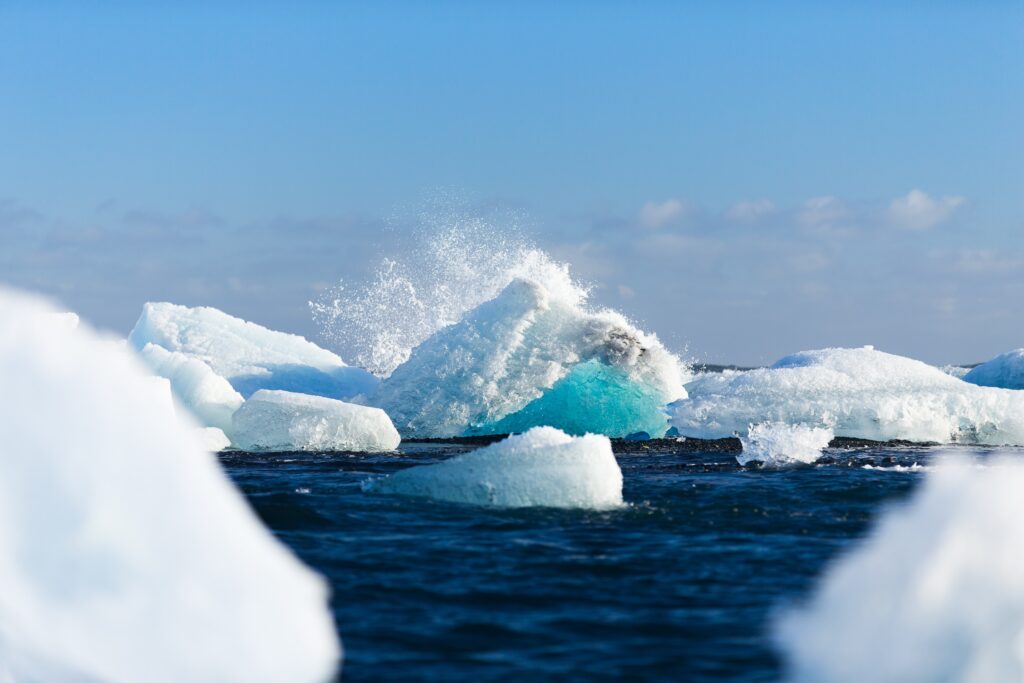
Tips for Successful Ice Fishing
Being Patient and Persistent
Ice fishing requires patience and persistence. Fish may not always be actively feeding, and bites can be sporadic. Don’t get discouraged if you’re not immediately catching fish. Stay patient, stay positive, and keep trying different techniques and locations until you find success. Remember, a slow day on the ice is still better than a day indoors!
Finding the Right Depth
Finding the right depth can significantly impact your catch rate. Different fish species have preferred depths during winter, so it’s important to experiment and find the sweet spot. Start by fishing different depths and pay attention to any signs of fish activity, such as marks on your sonar or tip-up flags popping up. Once you start getting bites or hooking fish consistently at a specific depth, focus your efforts in that range.
Varying Your Techniques and Bait
Fish can be selective when it comes to bait and presentation, so don’t be afraid to experiment and vary your techniques. Try different jigging motions, change the size or color of your lures, or switch between live and artificial bait. Keep an eye on other anglers on the ice and observe what techniques are working for them. By adapting and trying new approaches, you increase your chances of triggering fish bites.
Observing Other Anglers
One of the best ways to learn and improve your ice fishing skills is by observing other anglers. Pay attention to experienced ice anglers on the same fishing spot and see what techniques, bait, or locations they are using. Watch how they handle their gear, set up their tip-ups, or jig their baits. Don’t hesitate to strike up a friendly conversation and learn from their wisdom. Sharing knowledge is a fundamental part of the ice fishing community.
Understanding Solunar Fishing Tables
Solunar fishing tables are guides that provide information on the best times to go fishing based on the moon and sun’s positions. These tables take into account factors such as the moon phase, sunrise and sunset times, and the moon’s transit. While not foolproof, solunar tables can help you plan your ice fishing trips during periods when fish are most active and increase your chances of success.
Avoiding Spooking Fish
Fish can be easily spooked in the clear and relatively quiet environment of ice fishing. Avoid excessive noise, sudden movements, or banging on the ice, as these can send out vibrations and scare away fish. Use caution when drilling holes or moving around, and try to keep your ice shelter or fishing shack as soundproof as possible. Staying quiet and minimizing disturbances ensures that fish remain oblivious to your presence.
Maintaining Stealth and Silence
In addition to avoiding sudden noises, maintaining stealth and silence is essential for successful ice fishing. Sound travels much farther and clearer under the ice than on open water, so be mindful of your movements and talking volume. Walk lightly and move slowly on the ice. Keep conversations to a minimum and use hand signals or whispers when necessary. The more inconspicuous you are, the more likely you’ll have fish swimming right under your hole.
Ice Fishing Safety Measures
Knowing Ice Thickness Guidelines
Ice thickness is one of the most critical safety factors to consider while ice fishing. Different activities require different minimum ice thicknesses, so it’s essential to know and follow local ice thickness guidelines. As a general rule, a minimum ice thickness of four inches is recommended for walking or ice fishing, while snowmobiles and ATVs usually require at least five to seven inches. Consult local authorities or experienced ice anglers for accurate and up-to-date ice thickness guidelines.
Carrying Ice Picks or Spikes
Carrying ice picks or spikes is a crucial safety measure for ice fishing, especially in case of an unexpected fall through the ice. These handheld tools are designed to provide you with the means to grip the ice and pull yourself back onto the surface. Wear them around your neck or attach them to your jacket so that they’re easily accessible in an emergency situation. Regularly practice using ice picks or spikes to ensure you’re prepared to react quickly if needed.
Using Ice Cleats for Traction
To minimize the risk of slipping and falling on the slippery ice, it’s important to wear ice cleats or traction devices. Ice cleats attach to your boots and provide additional grip on the ice, reducing the chance of accidents. Make sure your ice cleats are securely fastened and fit properly to ensure maximum traction. It’s better to be safe than sorry when it comes to maintaining your balance on the ice.
Avoiding Crowded Fishing Spots
While it may be tempting to join a crowded fishing spot, it’s important to consider the safety implications. Overcrowded areas can result in weakened ice due to the concentration of weight. Additionally, the risk of accidents or injuries increases when too many people are in close proximity. Instead, seek out less crowded fishing spots or spread out to minimize the stress on the ice and ensure everyone’s safety.
Understanding Hypothermia Risks
Hypothermia is a serious risk when engaging in ice fishing, as prolonged exposure to extreme cold can lead to a dangerous drop in body temperature. To prevent hypothermia, dress appropriately in layers to retain body heat, stay dry, and protect exposed skin. Take regular breaks indoors or in a heated ice fishing shelter to warm up and replenish your body’s warmth. Recognize the early symptoms of hypothermia, such as shivering, confusion, or disorientation, and seek immediate medical help if needed.
Staying Alert and Avoiding Distractions
Ice fishing can be a relaxing and enjoyable experience, but it’s important to stay alert and be mindful of your surroundings. Avoid distractions, such as excessive alcohol consumption or engaging in activities that may compromise your safety. Stay focused on ice conditions, changes in weather, and any signs of potential danger. Being aware and attentive is crucial for ensuring your safety and the safety of others.
Knowing First Aid and Emergency Procedures
While no one wants to think about accidents or emergencies, it’s important to be prepared. Have a basic understanding of first aid procedures, such as treating minor cuts, fractures, or hypothermia symptoms. Carry a first aid kit with essential supplies and include items specific to ice fishing, such as cold packs, adhesive bandages, and emergency blankets. Know how to contact emergency services and have a plan in case of a serious incident. Safety should always be your top priority.
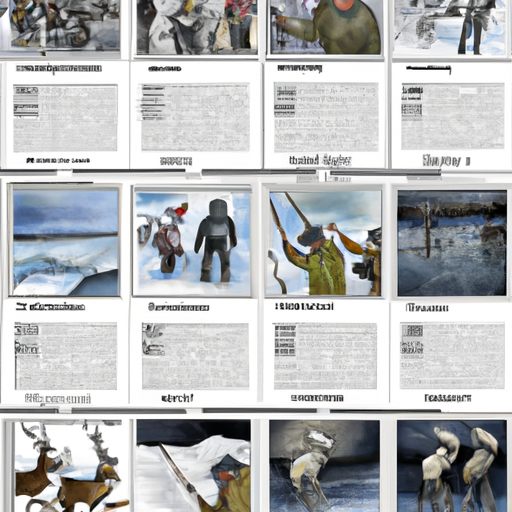
Ice Fishing Etiquette
Respecting Other Anglers’ Space
When ice fishing in close proximity to other anglers, respecting their space is essential. Avoid setting up too close to someone already fishing, as this can disrupt their fishing experience. Respect personal boundaries by giving ample space for casting lines and moving around. Communication and courtesy go a long way in maintaining a positive and harmonious atmosphere on the ice.
Keeping the Fishing Area Clean
As responsible anglers, it’s important to keep the fishing area clean and free of litter. Dispose of your trash properly and consider bringing a small garbage bag to collect any waste generated during your ice fishing trip. Be mindful of the environment and pick up any discarded fishing line or plastic baits to prevent wildlife entanglements or pollution. Leaving the fishing area in better condition than you found it ensures a pleasant experience for everyone.
Practicing Catch and Release
Practicing catch and release is an important ethic in sustainable fishing and helps preserve fish populations for future generations. If you’re not planning to keep the fish you catch, handle them with care and release them as quickly as possible. Minimize any potential harm by wetting your hands before handling the fish, using barbless hooks, and avoiding extended periods of air exposure. Follow local fishing regulations for size and bag limits to promote responsible fishing practices.
Following Fishing Regulations
To ensure the long-term health and sustainability of fish populations, it’s crucial to follow fishing regulations and guidelines. Familiarize yourself with local fishing regulations, including size and bag limits, seasonal closures, and any special rules for specific bodies of water or fish species. Educate yourself on the regulations, fulfill your legal obligations, and advocate for responsible fishing practices.
Being Courteous and Friendly
Ice fishing is not only about the fish you catch but also the connections you make with fellow anglers. Be courteous and friendly to others on the ice, greeting them with a smile and engaging in casual conversation. Offer assistance if someone needs a hand or advice. A warm and friendly atmosphere contributes to a positive fishing experience for all.
Sharing Knowledge and Tips with Beginners
Part of the joy of ice fishing is welcoming newcomers to the hobby and sharing knowledge with beginners. If you encounter someone new to ice fishing, take the time to offer guidance, share tips, and answer any questions they may have. Encourage a sense of community and camaraderie by helping others improve their skills and fostering a love for ice fishing.
Ice Fishing for Beginners
Seeking Guidance from Experienced Anglers
If you’re new to ice fishing, seeking guidance from experienced anglers is a great way to get started. Reach out to local ice fishing clubs, forums, or fishing shops to connect with seasoned ice anglers who can provide valuable tips and advice. They can help you select the right gear, share their favorite fishing spots, and guide you through the basics of ice fishing techniques. Learning from experienced anglers will give you a solid foundation to build upon.
Starting with Simple Techniques
As a beginner, it’s best to start with simple ice fishing techniques and gradually increase your skills. Jigging and the dead stick method are excellent techniques to begin with, as they require minimal equipment and are relatively easy to master. Experiment with different types of bait, jigging motions, and depths to gain confidence and understand fish behavior in winter.
Mastering Basic Knots and Rigs
Understanding and mastering basic knots and rigs is an essential skill for any angler, including ice fishermen. Learn fundamental fishing knots such as the improved clinch knot, palomar knot, or loop knot. These knots are versatile and secure, ensuring your line won’t slip or break during critical moments. Additionally, familiarize yourself with basic rig setups, such as dropper rigs or tip-up rigs, to effectively present your bait and increase your chances of success.
Learning about Common Ice Fishing Terminology
Like any hobby or sport, ice fishing has its unique set of terminology that can be confusing for beginners. Take the time to learn and understand common ice fishing terms to ensure effective communication with other anglers and a better understanding of instructional materials. Familiarize yourself with terms such as jigging, tip-up, dead stick, sonar, fish finder, lure, bait, and many more. As you become more immersed in the ice fishing community, you’ll find yourself confidently using these terms in conversations.
Understanding Different Ice Fishing Rod Actions
Ice fishing rods come in different actions, which refer to their flexibility and sensitivity. Understanding the different rod actions helps you select the right rod for your intended fishing style and the fish species you’re targeting. Fast-action rods bend mostly in the upper third, providing excellent sensitivity for detecting subtle bites. Medium-action rods bend in the upper half, offering a balance between sensitivity and the ability to handle larger fish. Slow-action rods bend throughout their length and are ideal for lighter lines and smaller fish. Consider your target species and your personal preference when choosing an ice fishing rod.

Ice Fishing in Different Seasons
Ice Fishing in Early Winter
Early winter is an exciting time for ice fishing, as fish tend to be more active after the ice forms. Target species such as perch, walleye, northern pike, or trout make for popular catches during this season. Focus on shallower areas where fish might be congregating to feed on insects or small baitfish before the colder months. Adjust your fishing techniques and bait based on the fish’s activity level and follow the guidelines for ice thickness to ensure a safe ice fishing experience.
Ice Fishing in Late Winter
As winter advances, ice fishing in late winter can present its challenges, but it can also yield rewarding catches. Fish behavior changes as winter progresses, with some species becoming more sluggish due to limited food sources. Focus your efforts on deeper areas and structures where fish are more likely to seek protection. Experiment with different presentations and bait to entice bites. Be mindful of deteriorating ice conditions and changing weather patterns, as safe ice becomes even more critical during late winter ice fishing expeditions.
Ice Fishing in Spring
Spring ice fishing offers anglers a unique opportunity to catch fish during the transition from ice to open water. As the ice begins to melt, fish become more active and move closer to the surface. Target species such as panfish or walleye that are known for their spring activity. Pay attention to areas where melting ice creates pockets of open water or where runoff enters the lake, as these can be productive fishing spots. Exercise caution, as ice conditions can deteriorate quickly during this season, and always prioritize your safety.
Ice Fishing in Different Locations
Ice Fishing in Lakes
Ice fishing in lakes offers a wide range of opportunities to target various fish species. Choose lakes with a reputation for good ice fishing and a healthy fish population. Research the lake’s bathymetry and understand its depths, structural features, and preferred habitats for different fish species. Drill holes strategically and cover various depths to locate productive fishing spots. Lakes often provide more space and room to spread out, allowing for a peaceful and enjoyable ice fishing experience.
Ice Fishing in Rivers
Ice fishing in rivers presents its own set of challenges and considerations. Look for slow-moving sections of rivers, such as dams or backwaters, where fish tend to congregate during winter. Pay attention to areas with deep pools, submerged structures, or current breaks, as they can attract fish seeking cover or looking for an easy meal. River ice is generally less consistent than lake ice, so exercise caution and check the ice thickness regularly.
Ice Fishing in Ponds
Ponds can be excellent options for ice fishing, especially for beginners or those looking for a peaceful and secluded setting. Ponds often have shallower and calmer water, making them ideal for targeting panfish such as bluegill or crappie. Focus on areas with vegetation or submerged structures, as fish tend to seek cover in these spots. Ponds are generally easier to navigate and explore compared to larger bodies of water, making it easier to locate fish and enjoy a successful day on the ice.
Ice Fishing in Reservoirs
Reservoirs offer anglers the opportunity to target a wide variety of fish species, including walleye, pike, bass, and more. Research the reservoir’s depth and structural features to pinpoint potential fishing areas. Pay attention to areas where rivers or streams enter the reservoir, as they can create favorable conditions for fish. Reservoirs can vary greatly in size, so consider using ice fishing electronics to locate fish and identify productive spots. Always check ice conditions and potential hazards, as reservoirs often experience variations in water levels and currents.
Ice Fishing in Great Lakes
Ice fishing in the Great Lakes presents a unique and exciting experience, with the potential to catch trophy-sized fish. However, it also demands extra caution due to the size and power of these massive bodies of water. When ice fishing on the Great Lakes, always consult local authorities, ice safety guidelines, and experienced anglers for information on ice conditions and regulations. Focus on bays or protected areas where fish are likely to seek refuge. Be prepared for challenging weather conditions and have the necessary safety equipment, such as ice picks and flotation devices.
Ice fishing is an incredible winter pastime that allows you to enjoy the beauty of frozen landscapes while pursuing fish beneath the ice. With the right gear, preparation, techniques, safety precautions, and etiquette, you can have a successful and enjoyable ice fishing experience. Remember to respect the environment, fellow anglers, and the fish themselves. Practice responsible fishing and relish the camaraderie and connection that ice fishing brings. Stay warm, be patient, and embrace the wonders of the winter fishing wonderland.



